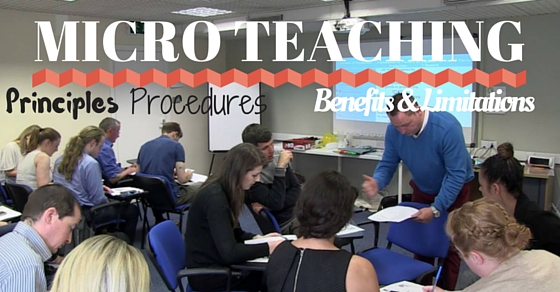In the last post of my article I wrote about definition, history and aim of micro-teaching. In the article I explained about how the expert like Allen, who first developed micro teaching at Stanford University, defines micro teaching as a teaching model which is scaled down in terms of time and numbers of students and focus on selected aspects of teaching.
Micro-teaching helps teachers in developing their skills to prepare lesson plans, choose teaching goals, speak in front of a group, and to ask questions and use evaluation techniques. Today, this model has been widely applied around the world, especially in faculty of education as the compulsory course taken by university students before they take teaching practice performance.
To continue publishing educational articles. In the present article I would like to share you about the rationale of micro-teaching. The term rationale implies the meaning of why micro-teaching is important to prospective teacher before they come to the real teaching. Furthermore, they are several rationales of micro-teaching that has been set by Allen (1970) in his early publishing about micro-teaching technique.
Micro-teaching is the real teaching in small portion where a teacher and students work together in practice situation.
Micro-teaching reduces the complexities of normal classroom teaching, thus allowing the teacher to focus on the acquisition of teaching skill.
Knowledge and information about performance aid the prospective teacher to acquire a teaching skill. The feedback from supervisor/lecturer, colleagues, or recording will help them to modify the behavior of teaching.
Micro-teaching considers the prospective teacher’s capabilities by allowing them to select content of the lesson from the areas of his greatest competence.
Micro-teaching provides a setting where the prospective teacher can teach students of various backgrounds, intellectual intelligence, and age groups before facing a class he teaches.
Micro-teaching allows greatest control over the environment/classroom with regard to students, methods of feedback, supervision, and other setting variables.
Micro-teaching provide a low threat situation in which to practice teaching skills, a situation should be more conducive to learning than the high anxiety level that exhibited by new teachers when facing real teaching.
Micro-teaching is a low risk situation for both teacher and students because it is not a part of regular curriculum. So then students learning will not be endangered.
Micro-teaching setting allows the prospective teacher to perfect certain skills that he will be subsequently expected to perform in the classroom.
Micro-teaching allows for the repetitive practice necessary to over lean skills which will be used during real teaching.
Micro-teaching incorporates space or distributed practice of a skill over period of time, allowing for the neurophysiological consolidation of new data for long term storage and retrieval.
Regards,
Mrs. Don

thanks for your such a nice article!!
Downvoting a post can decrease pending rewards and make it less visible. Common reasons:
Submit
Downvoting a post can decrease pending rewards and make it less visible. Common reasons:
Submit